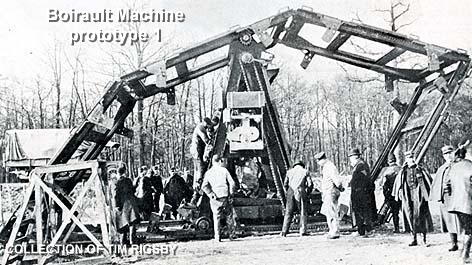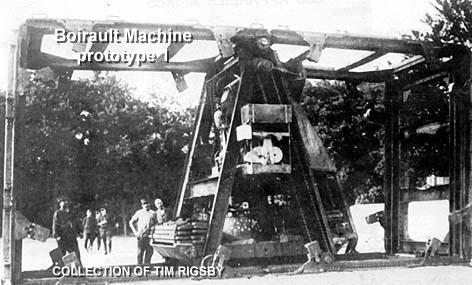Author: Tim Rigsby
These vehicles were designed by a French engineer known as Mr.Boirault. Mr.Boirault proposed the Boirault Machine (prototype 1) in December 1914, to help combat the ever growing nuisance of barbed wire and static warfare. His attempts developed into two of the strangest vehicle designs of World War One.

Boirault Prototype 1
This vehicle was designed to be capable of crossing muddy trenches, and crushing the dreaded miles of barbed wire. It consisted of six metal frames sliding on a pyramidal structure. The driving compartment was situated in the middle, and was supported by large girders. This was also where the petrol engine was located, it helped propel the monster to a maximum of 3 kph. Propulsion was achieved by the motor turning chains and driving rods, which were connected to the metal girders.

Continue reading “Boirault Machine (Anti-barbed wire Vehicle)”







